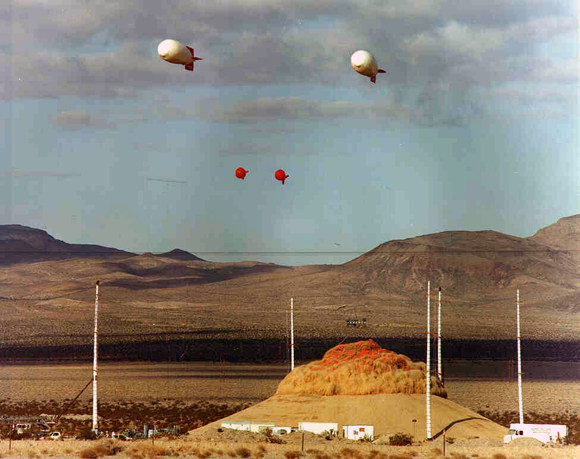Meri Lugo and I have a short piece on nuclear weapons dismantlement in The Argument, Foreign Policy’s “provocation about global politics, economics, and ideas, written by people who shape them.”
Speaking in Prague on April 5, U.S. President Barack Obama called the thousands of nuclear weapons sitting in world arsenals “the most dangerous legacy of the Cold War.” He proposed deep cuts in U.S. and Russian nuclear stockpiles. But when policymakers talk about nuclear reductions, what do they mean in practice? After all, you can’t just leave the warheads out on the curb on Tuesday morning for the garbage collector to pick up.
Not much opportunity for links, but I wanted to mention both Dismantling U.S. Nuclear Warheads by Hans Kristensen and Stan Norris, as well as a OTA report on Dismantling the Bomb ….
My interest in this, by the way, is entirely a function of my obsession with gravel gerties like the one pictured above (in Nevada). Seriously.


“The warheads now undergoing dismantlement were not designed to come apart –…”
I guess it’s true that if you read/say something enough times it becomes fact whether it’s true or not.
Warheads undergoing dismantlement now & for the past several years were always designed to “come apart”.
Even during Phase 4, 5 & 6, bombs & warheads were completely & safely disassembled for various reasons at Pantex (i.e. TMS, NESS, or stockpile surveillance requirements, etc.).
There were a few tough nuts such as the W79 but, in any case prior to FPU, complete & safe disassembly of the warhead required demonstration and full approval.
Possibly there has developed some confusion with another WMD dismantlement activity: the destruction of the chemical weapon arsenal.
Chemical munitions were manufactured with no means of disposal envisioned – other than being blown up.
Nuclear weapons on the other hand always had to accessible for maintenance. And the very expensive fissile materials inside have been recycled into new weapons since the early days of the nuclear weapon production complex.
I wasn’t confused.
I did grossly oversimplify, which is always a danger under 500 words.
I wanted to communicate that ease of dismantlement was not a high priority during the Cold War and, therefore, has resulted in “a few tough nuts to crack.” I don’t think anyone would disagree that, were we to design a new warhead, that we would make different choices to ease surveillance and eventual dismantlement.
If I gave the impression, through flip language, that the weaponeers were grossly negligent, then I apologize.
I intended to indicate that the balance of interest has shifted.
Jeffrey…Oversimplified yes but, I did not think of your comment as flippant or grossly negligent.
The intent of my post was for clarification only. In various articles I’ve read similar comments regarding “how difficult” it is to disassemble (dismantle) weapons at Pantex. Actually, it’s a lot easier & faster to disassemble than assemble them.
As you’re probably aware, the full-scale Gravel Gertie test shown in your article was conducted in late 1982. Three earlier full-scale test of the Gravel Gertie were also conducted at NTS in the mid to latter 1950’s. Prior to these tests a full-scale test (using tracer material) was conducted at Pantex in May 1956 using a Richmond Magazine modified with several feet of gravel & sand on the magazine.
In addition to the use of Gravel Gerties, introduction of the sealed pit was a major change to NE operations at Pantex & Burlington plants.
I believe that NNSA announced a couple of years ago that they planned to complete dismantlement of all weapons currently in awaiting dismantlement by 2023. Perhaps you have more recent information for the 2030 figure you use in the piece.
For those who are interested, I have a chapter on the requirements for transparent warhead dismantlement for disarmament (very general stuff, not the kind of detail most Wonkers would want) in the recent Reykjavik Revisited book.